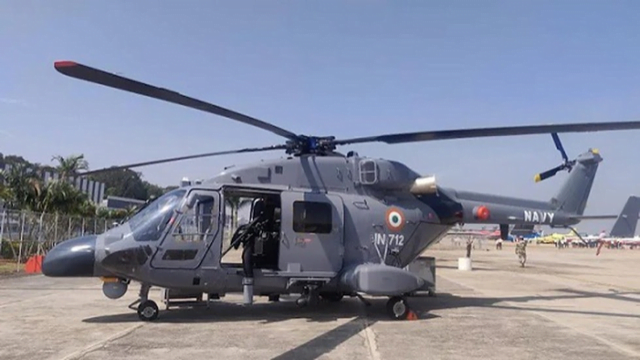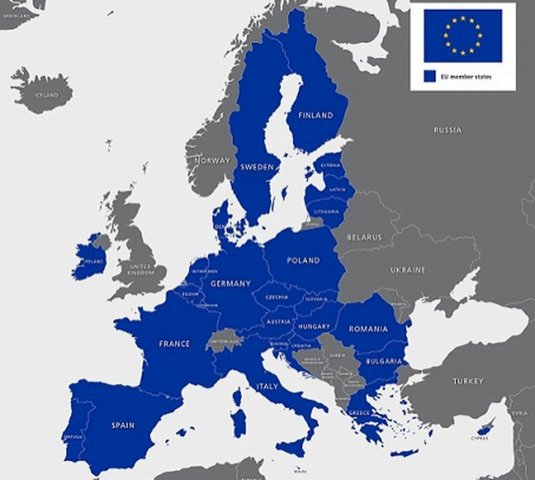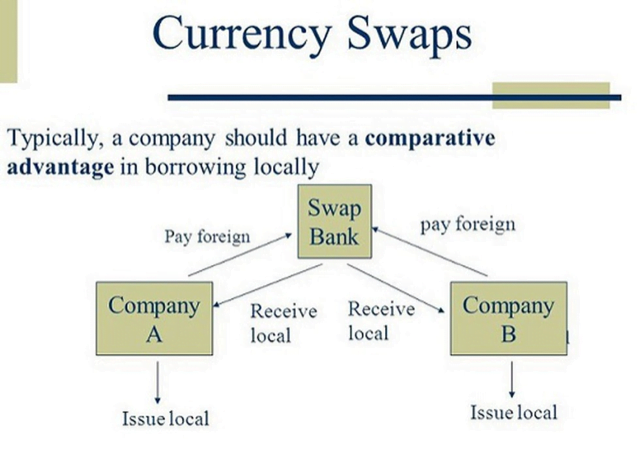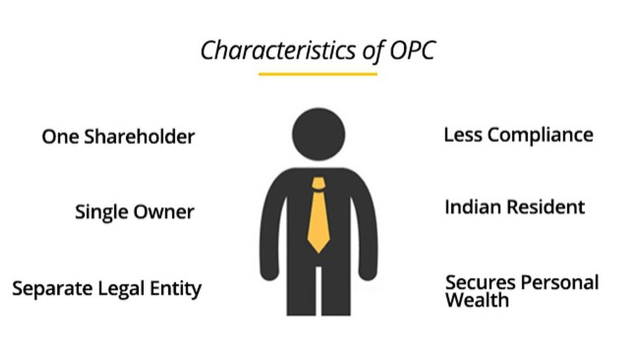IASbaba's Daily Current Affairs Analysis
Archives
(PRELIMS + MAINS FOCUS)
RBI to give small investors direct access to Government Securities
Part of: GS Prelims and GS- III – Economy
In news
- The RBI has informed that it will give small investors direct access to its government securities (G-sec) trading platform.
Key takeaways
- Retail investors can directly open their gilt accounts with RBI, and trade in government securities.
- It is being described as a major structural reform.
- The two key categories are:
- treasury bills – short-term instruments that mature in 91 days, 182 days, or 364 days, and
- dated securities – long-term instruments, which mature anywhere between 5 years and 40 years.
Do you know?
- A “Gilt Account” means an account opened and maintained for holding Government securities, by an entity or a person including a person resident outside India’ with a “Custodian” permitted by the RBI.
- G-secs are debt instruments issued by the government to borrow money.
Important value additions
- Like bank fixed deposits, g-secs are not tax-free.
- They are generally considered the safest form of investment because they are backed by the government.
- So, the risk of default is almost nil.
- However, they are subject to fluctuations in interest rates. So, they are not completely risk-free.
‘Made In India’ MK-III Advanced Light Helicopters (ALH)
Part of: GS Prelims and GS- III – Defence and Security; Indigenous technology
In news
- The Indian Navy received three “made in India” Advanced Light Helicopters (ALH) from the state-run Hindustan Aeronautics Ltd (HAL).
- The helicopters are customised for coastal security.

Key takeaways
- The naval version of ALH is fitted with an array of advanced sensors that can detect Mumbai terror attacks like intrusions on Indian waters.
- These helicopters have the latest-generation avionics, indigenous low-frequency dunking sonar, a full glass cockpit with an integrated architecture display system, and powerful Shakti engines.
- It also has a nose-mounted surveillance radar with 270-degree coverage that can detect and track multiple marine targets.
- Its synthetic aperture radar and inverse synthetic aperture radar can detect targets on the sea.
Guidelines For Floating Structures issued
Part of: GS Prelims and GS- III – Infrastructure
In news
- Ministry of Ports, Shipping, and Waterways has issued the guidelines for floating structures with a vision to set up world-class floating infrastructure all along the coastline in the upcoming projects.
Key takeaways
- The guidelines set out technical aspects for implementation of Floating Jetties or Platforms for Marinas, Minor Harbors, Fishing Harbours, etc. in coastal areas, estuaries, waterways, rivers, and reservoirs.
- These guidelines may also be suitably utilized for floating platforms in various waterborne systems.
- Floating structure because of its inherent advantages is an attractive solution.
- The benefits of floating jetties include their cost-effectiveness, faster implementation, easily expandable, and have minimal environmental impacts.
Do you know?
- Ministry of Ports, Shipping and Waterways has successfully implemented a few projects including setting up of passenger floating jetties in Goa, water-aerodromes at Sabarmati River and at Sardar Sarovar Dam for the seaplane services which are working satisfactorily.
Related articlses:
- Sagarmala Seaplane Services (SSPS): Click here
- India’s First Seaplane Project: Click here
Light Utility Helicopter (LUH) receives the Initial Operational Clearance
Part of: GS Prelims and GS- III – Defence and Security
In news
- The Light Utility Helicopter (LUH) received the Initial Operational Clearance (IOC) for the Indian Army from the Centre for Military Airworthiness and Certification (CEMILAC).
Important value additions
- The LUH is a three-ton class new generation single-engine helicopter.
- Indigenously designed and developed: Rotary Wing Research and Design Centre of Hindustan Aeronautics Limited (HAL).
- Its features are suitable for operations in the diverse operating conditions unique to India.
- The LUH will replace the aging fleet of Cheetah/Chetak helicopters operated by the Services.
- The LUH is powered by a single turboshaft e,ngine with adequate power margins to accomplish high altitude missions in the Himalayas with ease.
- LUH is equipped with Smart Cockpit Display System (Glass Cockpit), state-of-the-art HUMS (Health & Usage Monitoring System) and is designed for various utility and armed roles.
1st India-EU High-Level Dialogue On Trade And Investment
Part of: GS Prelims and GS- II – International relations
In news
- The 1st High-Level Dialogue (HLD), co-chaired by the Union Minister of Commerce and Industry and the European Union Executive Vice-President & Trade Commissioner was held recently.

Key takeaways
- Commitment to the establishment of this Dialogue was a major outcome of the 15th India-EU Leader’s Summit held in July 2020, with an objective for Ministerial level guidance towards the bilateral trade and investment relations.
- The Ministers also agreed to meet within the next three months, with an objective for reaching consensus on a host of bilateral trade & investment cooperation issues viz. a bilateral Regulatory Dialogue; an India-EU Multilateral Dialogue to explore further possibilities of cooperation; etc.
The Central Bank of Sri Lanka (CBSL) settled a $400 million currency swap facility from the RBI
Part of: GS Prelims and GS- II – International relations & GS – III – Economy
In news
- The Central Bank of Sri Lanka (CBSL) settled a $400 million currency swap facility from the RBI.
- The two countries had agreed upon meeting the terms.

Key takeaways
- The CBSL obtained the swap facility on July 31, 2020, for an initial period of three months, to cope with the severe economic impact of the pandemic.
- Subsequently, the RBI provided a three-month rollover at CBSL’s request, until February 1, 2021.
- A further extension would require Sri Lanka to have a successfully negotiated staff-level agreement for an IMF programme, which Sri Lanka does not have at present.
Important value additions
- Currency swap agreements involve trade in local currencies, where countries pay for imports and exports at pre-determined rates of exchange without the involvement of a third country currency like the US dollar.
- It reduces the risk of volatility against the third currency and does away with the charges involved in multiple currency exchanges.
KA-226T Utility Helicopters
Part of: GS Prelims and GS- III – Defence and Security
In news
- KA-226T Utility Helicopters were in news recently.
- The total indigenous content of the Ka-226T utility helicopters, to be jointly manufactured locally by India and Russia with Transfer of Technology (ToT), is between 27%-33%.

Key takeaways
- The Ka-226T is meant to replace the aging and obsolete Cheetah and Chetak fleet of the Army and Air Force and the total technical life of these will start finishing from 2023 onwards.
- The helicopters would be manufactured by India Russia Helicopters Limited (IRHL) — a joint venture between HAL and Russian Helicopters.
Background info:
- In 2015, India and Russia had concluded an Inter-Governmental Agreement (IGA) for at least 200 Ka-226T twin-engine utility helicopters estimated to cost over $1 billion with 60 helicopters to be directly imported and the the remaining 140 to be manufactured locally.
- The first helicopter would be delivered within 36 months from the signing of the contract.
- As per the Russian proposal, the localization plan would be spread over four phases, beginning with 3.3% indigenisation for 35 helicopters, going up to 15% for the next 25 helicopters, 35% for 30 helicopters in Phase 3, and eventually to 62.4% indigenisation in Phase 4 for the last 50 helicopters.
(Mains Focus)
ECONOMY/ GOVERNANCE
Topic:
- GS-3: Indian Economy and issues relating to planning, mobilization, of resources, growth, development and employment
- GS-2: Government policies and interventions for development in various sectors and issues arising out of their design and implementation.
One-person Companies and why we need it
Context: In her Budget speech, Union Finance announced measures to ease norms on setting up one-person companies (OPCs).

What is an one-person company?
- As the name suggests, an one-person company is a company that can be formed by just one person as a shareholder.
- These companies can be contrasted with private companies, which require a minimum of two members to get going.
- However, for all practical purposes, these are like private companies.
- However, the regulatory procedures for single-person company is much more simplified in comparison to a normal company
- It is not as if there was no scope for an individual with aspirations in business prior to the introduction of OPC as a concept.
- As an individual, a person could get into business through a sole proprietorship mode, and this is a path that is still available.
What is the difference between single-person and sole proprietorship company?
- A single-person company and sole proprietorship differ significantly in how they are perceived in the eyes of law.
- For single-person company, the person and the company are considered separate legal entities.
- In sole proprietorship, the owner and the business are considered the same.
- This has an important implication when it comes to the liability of the individual member or owner. In a one-person company, the sole owner’s liability is limited to that person’s investment.
- In a sole proprietorship set-up, however, the owner has unlimited liability as they are not considered different legal entities.
Is this a new idea?
- No. Such a concept already exists in many countries.
- In India, the concept was introduced in the Companies Act of 2013.
- Its introduction was based on the suggestions of the J.J. Irani Committee Report on Company Law, which submitted its recommendations in 2005.
- Pointing out that there was a need for a framework for small enterprises, the committee said small companies would contribute significantly to the Indian economy, but because of their size, they could not be burdened with the same level of compliance requirements as large public-listed companies.
- The report, while talking about giving entrepreneurial instincts of the people an outlet in the age of information technology, said, “It would not be reasonable to expect that every entrepreneur who is capable of developing his ideas and participating in the marketplace should do it through an association of persons.”
- While making a case for one-person companies, the committee also said, “Such an entity may be provided with a simpler regime through exemptions so that the single entrepreneur is not compelled to fritter away his time, energy and resources on procedural matters.”
What was the follow up on the committee report?
- The law on one-person companies that took shape, as a result, exempted such companies from many procedural requirements, and, in some cases, provided relaxations.
- For instance, such a company does not need to conduct an annual general meeting, which is a requirement for other companies. A one-person company also does not require signatures of both its company secretary and director on its annual returns. One is enough.
- There was, however, criticism that some rules governing a one-person company were restrictive in nature. This year’s Union Budget has dealt with some of these concerns.
How many OPCs does India have?
- The number of OPCs was 2,238 (out of a total of about 1 million companies) as on March 31, 2015.
- According to data compiled by the Monthly Information Bulletin on Corporate Sector, there were 34,235 one-person companies out of a total number of about 1.3 million active companies in India, as on December 31, 2020.
- Data also show that more than half of the OPCs are in business services.
What has changed for these companies with the new measures in this year’s Budget?
- One of the measures that the Finance Minister has announced in the Budget pertains to the removal of restrictions on paid-up capital and turnover.
- The 2014 rule, which stated that a one-person company would cease to have that status once its paid-up share capital exceeds ₹50 lakh or its average turnover for the preceding three years exceeds ₹2 crore, has been lifted.
- The proposals also include, “reducing the residency limit for an Indian citizen to set up an OPC from 182 days to 120 days and also allow non-resident Indians (NRIs) to incorporate OPCs in India.” Earlier, only an Indian citizen and an Indian resident could start a single-person company.
- These changes come alongside a proposal to increase the capital base and turnover threshold for companies that can be classified as ‘small’, which means they can enjoy easy compliance requirements a bit longer.
- The capital base limit has been increased from ₹50 lakh to ₹2 crore, and the turnover limit has been increased from ₹2 crore to ₹20 crore.
Conclusion
- The government’s proposal is seen as a move to encourage corporatisation of small businesses.
- It is useful for entrepreneurs to have this option while deciding to start a business.
RIGHTS/GOVERNANCE/ SECURITY
Topic:
- GS-2: Government policies and interventions for development in various sectors and issues arising out of their design and implementation.
- GS-3: Challenges to internal security through communication networks, role of media and social networking sites in internal security challenges,
Social Media Regulation: Centre’s Notice to Twitter
Context: The Centre has issued notice to Twitter after the micro-blogging site restored more than 250 accounts that had been suspended earlier on the government’s ‘legal demand’.
Background of the Notice issued
- Farmer protest & Social Media Campaign: The issue pertains to tweets put out by some handles on the ongoing farmer protests as also a hashtag that suggested that a farmer genocide was being planned.
- Reaction by Ministry: The Ministry of Electronics and IT ordered these handles (257 URLs and one hashtag) to be blocked on the grounds that they were spreading dangerous misinformation about the protests.
- Twitter’s Response: Twitter initially complied with the order but then restored these tweets and handles, which included those of media houses.
- Basis of Government’s Order: The Government’s initial order was issued under Section 69A of the Information Technology Act, 2000.
What is Section 69A of IT Act, 2000?
It empowers the government to direct an intermediary to block any information for public access in the interest of
- sovereignty and integrity of India
- defence of India
- security of the State
- Friendly relations with foreign States
- Public order or
- Preventing incitement to the commission of any cognizable offence relating to above
This is the same Section under which hundreds of Chinese apps have been banned in recent months.
Are platforms required to comply with government requests?
- Cooperation between technology services companies and law enforcement agencies is now deemed a vital part of fighting cybercrime, and various other crimes that are committed using computer resources.
- These cover hacking, digital impersonation and theft of data.
- The potential of the Internet and its offshoots such as mail and messaging services and social media networks to disseminate potentially harmful content such as hate speech, rumours, inflammatory and provocative messages and child pornography, has led to law enforcement officials constantly seeking to curb the ill-effects of using the medium.
- Therefore, most nations have framed laws mandating cooperation by Internet service providers or web hosting service providers and other intermediaries to cooperate with law and order authorities in certain circumstances.
What does the law in India cover?
- In India, the Information Technology Act, 2000, as amended from time to time, governs all activities related to the use of computer resources.
- It covers all ‘intermediaries’ who play a role in the use of computer resources and electronic records.
- The term ‘intermediaries’ includes providers of telecom service, network service, Internet service and web hosting, besides search engines, online payment and auction sites, online marketplaces and cyber cafes.
- It includes any person who, on behalf of another, “receives, stores or transmits” any electronic record. Social media platforms would fall under this definition.
- Section 69 of the Act confers on the Central and State governments the power to issue directions “to intercept, monitor or decrypt…any information generated, transmitted, received or stored in any computer resource”.
How does the government block websites and networks?
- Section 69A, for similar reasons and grounds on which it can intercept or monitor information, enables the Centre to ask any agency of the government, or any intermediary, to block access to the public of any information generated, transmitted, received or stored or hosted on any computer resource.
- Any such request for blocking access must be based on reasons given in writing.
- Procedures and safeguards have been incorporated in the rules framed for the purpose.
What are the obligations of intermediaries under Indian law?
- Intermediaries are required to preserve and retain specified information in a manner and format prescribed by the Centre for a specified duration. Contravention of this provision may attract a prison term that may go up to three years, besides a fine.
- When a direction is given for monitoring, interception or decryption, the intermediary, and any person in charge of a computer resource, should extend technical assistance in the form of giving access or securing access to the resource involved, and must comply with the request to intercept or monitor or decrypt the information concerned.
- Failure to extend such assistance may entail a prison term of up to seven years, besides a fine.
- Failure to comply with a direction to block access to the public on a government’s written request also attracts a prison term of up to seven years, besides a fine.
- The Act also empowers the government to collect and monitor data on traffic. When an authorised agency asks for technical assistance in this regard, the intermediary must comply with the request. Non-compliance may lead to a prison term of up to three years, besides a fine.
Is the liability of the intermediary absolute?
- No.
- Section 79 of the Act makes it clear that “an intermediary shall not be liable for any third-party information, data, or communication link made available or hosted by him”.
- This section protects intermediaries such as Internet and data service providers and those hosting websites from being made liable for content that users may post or generate.
- However, the exemption from liability does not apply if there is evidence that the intermediary abetted or induced the commission of the unlawful act involved.
- Also, the provision casts a responsibility on intermediaries to remove the offensive content or block access to it upon getting “actual knowledge” of an unlawful act being committed using their resources, or as soon as it is brought to their notice.
- In Shreya Singhal vs U.O.I (2015), the Supreme Court read down the provision to mean that the intermediaries ought to act only “upon receiving actual knowledge that a court order has been passed, asking [them] to expeditiously remove or disable access to certain material”.
- This was because the court felt that intermediaries such as Google or Facebook may receive millions of requests, and it may not be possible for them to judge which of these were legitimate.
What has been the government’s actions post Shreya Singhal Case?
- The role of the intermediaries was spelt out in separate rules framed for the purpose in 2011. In 2018, the Centre favoured coming up with fresh updates to the existing rules on intermediaries’ responsibilities, but the draft courted controversy.
- This was because one of the proposed changes was that intermediaries should help identify originators of offensive content.
- This led to misgivings that this could aid privacy violations and online surveillance.
- Also, tech companies that use end-to-end encryption argued that they could not open a backdoor for identifying originators, as it would be a breach of promise to their subscribers.
- Other proposed changes, which have not been acted upon, include rules that intermediaries should deploy automated tools for proactively removing or disabling public access to unlawful information, and to have a 24×7 mechanism to deal with requisitions of law enforcement.
Critical Analysis of the issue
- Provocation over Social media can lead to violence: In a very sensitive setting, one that at least at one point was simmering with the potential for large-scale violence, provocation of any kind using social media platforms is unacceptable. Hence, regulation of internet intermediaries by government for the maintenance of Public Order & Peace is essential.
- Twitter’s action is slippery slope: The world over, technology platforms have enough safeguards to act as intermediaries without being liable for the content that is published. But Twitter’s act of defying the orders as per the law means it is on slippery territory.
- Section 69 Upheld by SC: Though the use of Section 69A has been often criticised for the secrecy surrounding the process, it was upheld by the Supreme Court in the landmark Shreya Singhal vs Union of India (2015).
- Hashtag cannot be defended on grounds of Article 19(1)(a): While there are many grounds on which this Government’s handling of the farm protests can be criticised, it can be said that the hashtag that it wanted blocked was not merely distasteful but seriously problematic, and indefensible on the grounds of freedom of speech.
Conclusion
What further happens in this face-off will be of interest not just for the two parties but for the governments of the world as well as the platforms of the world.
Connecting the dots:
- The dominance of Big Tech: Click here
(TEST YOUR KNOWLEDGE)
Model questions: (You can now post your answers in comment section)
Note:
- Correct answers of today’s questions will be provided in next day’s DNA section. Kindly refer to it and update your answers.
- Comments Up-voted by IASbaba are also the “correct answers”.
Q.1 The First Seaplane Project is functional between which of the following?
- Sabarmati River and Statue of Unity
- Dharoi dam and Ambaji
- Shatrunjay dam and Tapi
- Gateway of India and Ajanta Caves
Q.2 Consider the following statements regarding Government securities:
- These are tax free.
- These are debt instruments issued by the Private companies to borrow money.
Which of the above is or are correct?
- 1 only
- 2 only
- Both 1 and 2
- Neither 1 nor 2
Q.3 Which of the following was/were the objective of the EU?
- Establishing an economic and a monetary union
- Implementing a common foreign and defence policy
- Developing relations in the spheres of’ home affairs and justice
- All of the above
ANSWERS FOR 6th February 2021 TEST YOUR KNOWLEDGE (TYK)
| 1 | C |
| 2 | B |
| 3 | C |
Must Read
On RBI and Prices:
On India-EU Trade Pact:
About analysis of Union Budget 2021:














